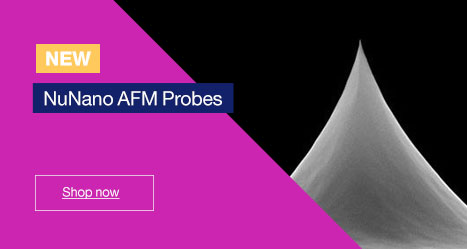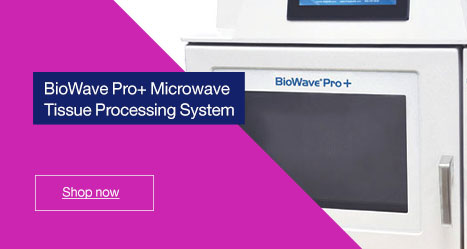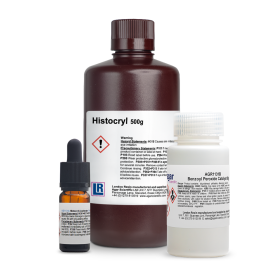Human kidney from a renal biopsy of a patient with systemic lupus erythematous. Toluidine Blue stained. 3μm section.
There are many advantages embedding in resin rather than paraffin wax. Resin causes less shrinkage and separation of tissue layers and thinner sections can be cut.
Semi-thin sections are particularly useful in the diagnosis of renal disease. In the renal glomerulus pathological changes previously requiring electron microscopy for diagnosis can now be revealed under the light microscope. The histology of densely cellular tissues benefits considerably from thin sections and this is particularly true of lymph nodes in the diagnosis and classification of lymphomas.
Hard dense tissues such as bone and some botanical specimens are given improved support during sectioning, preserving the juxtaposition of hard soft tissues. For this reason many laboratories now embed bone marrow trephines in resin routinely.
Histocryl is a hydrophilic acrylic resin, simple to use and formulated specifically for light microscopists. For those laboratories currently using an acrylic resin such as HEMA glycol methacrylate or commercially branded methacrylates no alteration need be made to the current processing schedule, but we have laid out here a typical processing schedule.
Fixation:
Most routine fixatives can be utilised with Histocryl (neutral buffered formalin is recommended), the time beig dependent on the type and size of the tissue in the normal way.
Dehydration:
| 1. 70% alcohol | 30 mins |
| 2. 90% alcohol | 30 mins |
| Two changes abs. alcohol 30 minutes each |
Infiltration:
Infiltrating solution:
- 100ml Histocryl + 1.5g bezoyl peroxide paste
- Mix thoroughly until solution becomes clear
Infiltrate tissue in 2-3 changes of catalysed resin 60 miutes each or overnight, depending on tissue ad size. When fully infiltrated the tissue will become transluscent.
Polymerisation:
Using a cotton wool bud or swab smear accelerator onto the base of each mould, the add polymerised resin and finally the tissue, allowing it to sink into the base rather than applying pressure.
The rate of polymerisation can be adjusted by varying the ratio of resin and accelerator, e.g.:
| One drop to 10ml freshly catalysed resin (with 1.5% benzoyl peroxide paste) | 10 mins |
| One drop to 20ml freshly catalysed resin (with 1.5% benzoyl peroxide paste) | 15 mins |
| One drop to 25ml freshly catalysed resin (with 1.5% benzoyl peroxide paste) | 20 mins |
Cutting and mounting:
Histocryl can be sectioned using a steel knife and a standard microtome, but the method of choice would be to use a motorised microtome and glass (Ralph type) knives. Sections can be obtained from 1 - 5μ, floated onto a warm water bath, picked up onto clean slides and dried on a plate at 60°C for at least 30 minutes.
Staining:
It is not necessary to etch or remove the resin before staining. Most routine stains give good results on tissue embedded in Histocryl using standard times and temperatures, although it may occasionally be necessary to extend some staining times.
Mounting:
For best results air-dry sections prior to mounting. DPX or Canada Balsam are recommended as mounting media.



